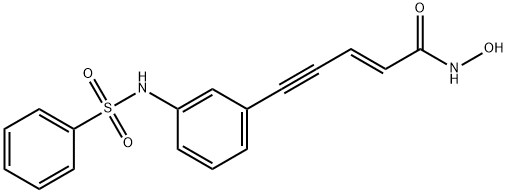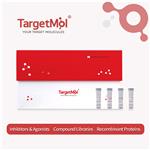Histone deacetylase inhibitor. A cell-permeable, aromatic sulfonamide derivative with a hydroxamic acid group that potently inhibits mammalian HDAC by binding to the active site zinc.
ChEBI: 5-[3-(benzenesulfonamido)phenyl]-N-hydroxypent-2-en-4-ynamide is a sulfonamide.
Oxamflatin is an aromatic sulfonamide derivative with a hydroxamic acid group. It stimulates the expression of the transcription factor, JunD, and fibronectin. In addition, oxamflatin also aids in the morphological reversion of various NIH3T3-derived transformed cell lines. It inhibits the proliferation of various mouse and human tumor cell lines in vitro.', 'Histone deacetylase inhibitor; anti-cancer agent.
This anti-tumor agent (FW = 342.38 g/mol; CAS 151720-43-3; Solubility: 13 mg/mL DMSO, methanol, acetonitrile, 10 mg/mL), also known as (2E)- 5-[3-[(phenylsulfonyl)amino]phenyl]-pent-2-en-4-ynohydroxamate, inhibits histone deacetylase. Oxamflatin shows antiproliferative activity in vitro against various mouse and human tumor cell lines, attended by drastic changes in the cell morphology and in vivo antitumor activity against B16 melanoma. Oxamflatin causes an elongated cell shape with filamentous protrusions as well as arrest of the cell cycle at the G1 phase in HeLa cells. These phenotypic changes in HeLa cells were similar to those induced by trichostatin A (TSA), a specific inhibitor of histone deacetylase (HDAC).



